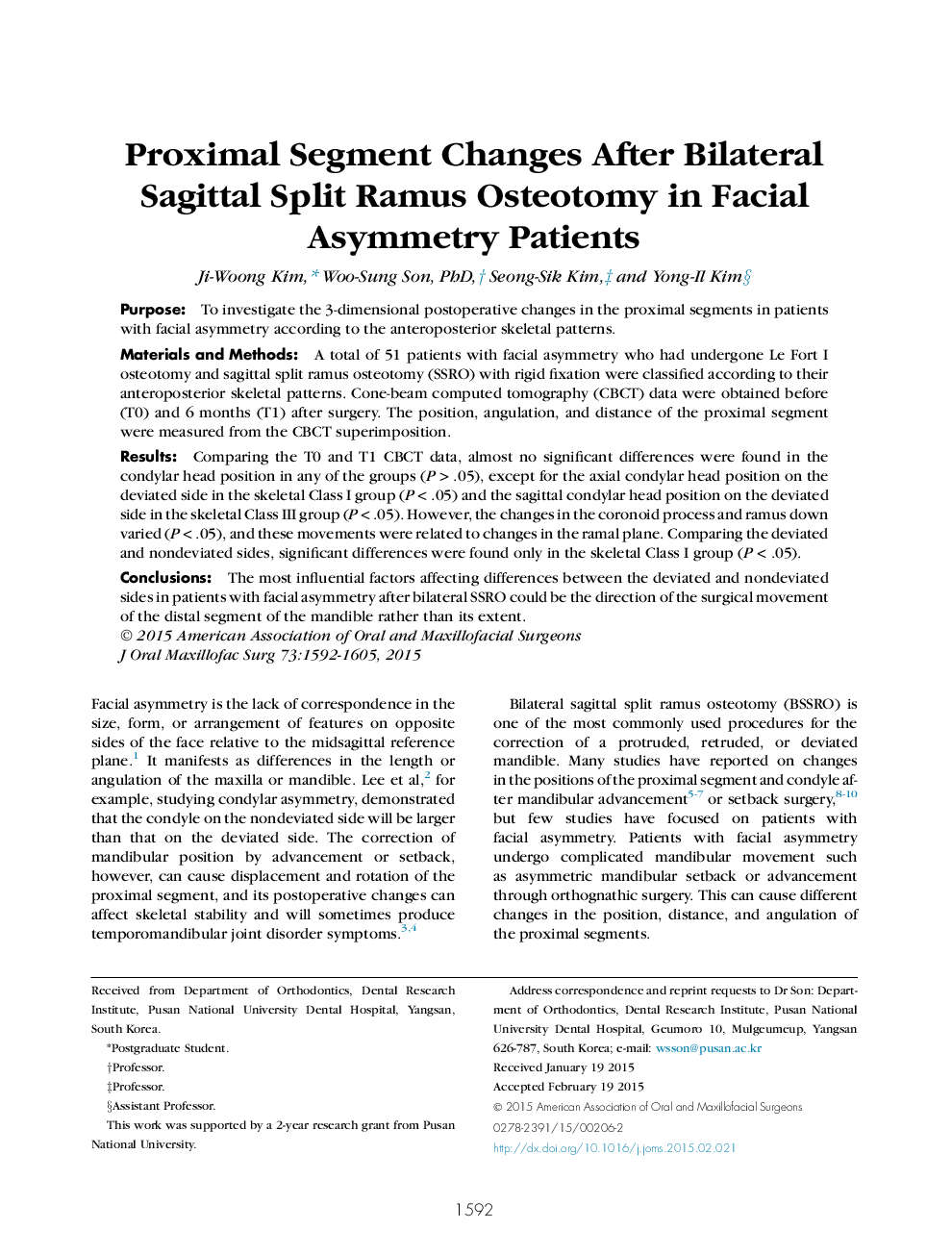| Article ID | Journal | Published Year | Pages | File Type |
|---|---|---|---|---|
| 3152333 | Journal of Oral and Maxillofacial Surgery | 2015 | 14 Pages |
PurposeTo investigate the 3-dimensional postoperative changes in the proximal segments in patients with facial asymmetry according to the anteroposterior skeletal patterns.Materials and MethodsA total of 51 patients with facial asymmetry who had undergone Le Fort I osteotomy and sagittal split ramus osteotomy (SSRO) with rigid fixation were classified according to their anteroposterior skeletal patterns. Cone-beam computed tomography (CBCT) data were obtained before (T0) and 6 months (T1) after surgery. The position, angulation, and distance of the proximal segment were measured from the CBCT superimposition.ResultsComparing the T0 and T1 CBCT data, almost no significant differences were found in the condylar head position in any of the groups (P > .05), except for the axial condylar head position on the deviated side in the skeletal Class I group (P < .05) and the sagittal condylar head position on the deviated side in the skeletal Class III group (P < .05). However, the changes in the coronoid process and ramus down varied (P < .05), and these movements were related to changes in the ramal plane. Comparing the deviated and nondeviated sides, significant differences were found only in the skeletal Class I group (P < .05).ConclusionsThe most influential factors affecting differences between the deviated and nondeviated sides in patients with facial asymmetry after bilateral SSRO could be the direction of the surgical movement of the distal segment of the mandible rather than its extent.
